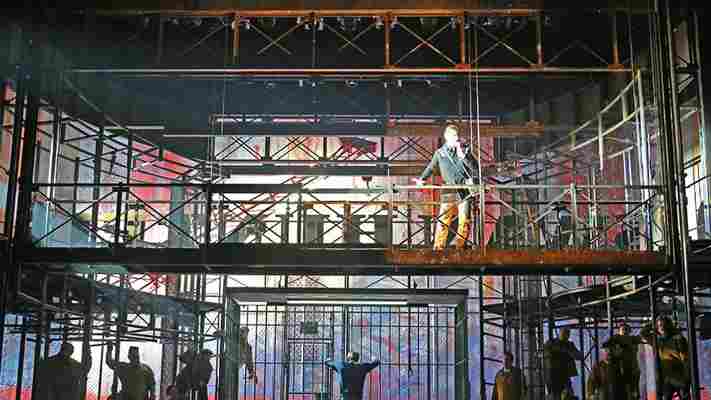One of the most striking things about 16-time Grammy winner Sting’s dazzling new musical, The Last Ship, is the role that the set and lighting effects play in telling the story about the end of the shipbuilding era in Wallsend, England, a working-class community near Newcastle-upon-Tyne (Sting’s hometown).

The show explores the relationships of father and son, mother and child, and husband and wife within a community undergoing rapid change due to the death of the shipbuilding industry. An inventive, flexible set juxtaposes elements like fire and water with man-made creations like cathedral-style windows, trusses, and bridges, allowing shades of light and darkness to frame the characters and their conflicts.
The members of the creative team explained to me how they worked to tell different aspects of the story. According to set and costume designer David Zinn ( Rocky, The Real Thing) , the back of the stage has the scale and texture of the very kinds of ships that blocked daylight from the streets of Wallsend. Director and two-time Tony Award winner Joe Mantello ( Wicked, Casa Valentina) was intent on portraying the grit of the shipbuilders’ environment. Production stage manager Brian Lynch described how the Brooklyn Navy Yard (where the television commercial for The Last Ship was filmed) helped to inspire the aesthetic of the set. And lighting designer Christopher Akerlind ( The Light in the Piazza) explained how the effects were almost musical themselves, as the last ship sails to sea and opens the stage up to light.
Take a behind-the-scenes tour of the sets of The Last Ship.
__ __
